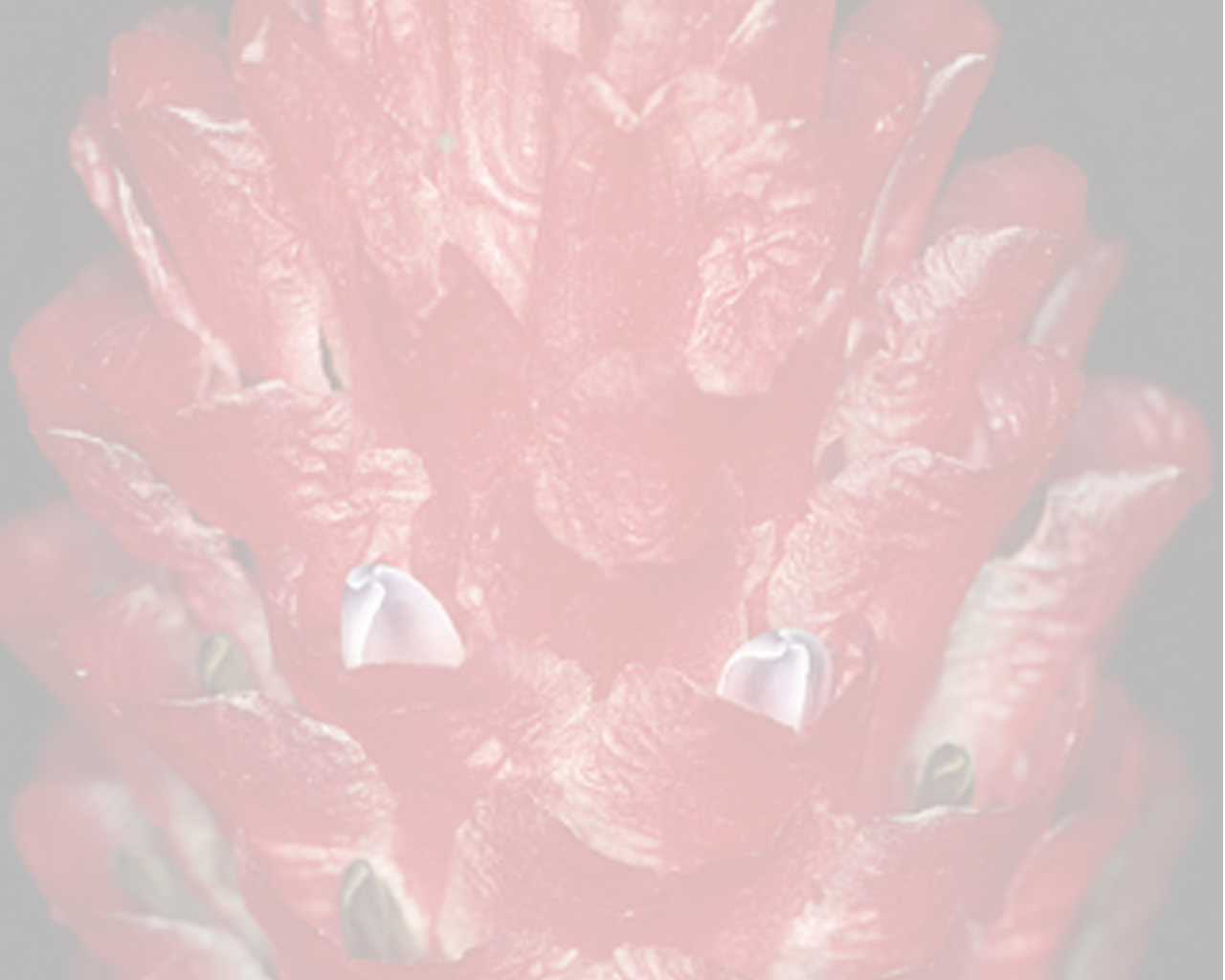Quesnelia edmundoi var. rubrobracteata Pereira
Literature references:
*move your mouse pointer over the page numbers to see comment
Comments:
- by Claudia Magalhaes Vieira in PESQUISAS, BOTANICA 57. 7-102. 2006
Ecological data: Endemic to the southeast portion of the Atlantic Pluvial Forest. It occurs as an epiphyte, on forest slopes, flooded areas and also in the hillside forests, at altitudes ca. 650 m/s.m.
In individuals cultivated near Vargem Grande, Rio de Janeiro, it was observed that the flowers are visited frequently by humming-birds. In all the examined live specimens the presence was verified of a nourishing hyaline, scentless and a little viscous, covering of part of the floral bracts and flowers, and that it seems to serve as an attraction to bees. At the moment there is no information about the origin or probable function of this nourishment.
Geographical distribution: Distributed mainly in the state of Rio de Janeiro, being recorded with less frequency for Espírito Santo. In the State of Rio de Janeiro, it occurs predominantly in the area of Rio São João, municipal district of Silva Jardim, in the Reserva Biologica de Poco das Antas and reaching adjacent areas, see Leme (1994), the municipal district of Casimiro de Abreu. There are also unpublished recordings of its occurrence in the north of the state, in the municipal district of Santa Maria Madalena (Fig. 10).
Q. edmundoi var. rubrobracteata was recently found in the municipal district of Rio de Janeiro, near Vargem Grande, forming populations occasionally epiphytic and sparsely distributed in hillside forests. There is doubt regarding its occurrence in a native state in this area, given the observed possibility that it developed from the propagation of seeds originating from cultivated material in the area. However, in view the well developed presence and with a large number of individuals in some areas, in addition to the report that this variety already existed at the place before the presence of cultivated material (L.C.Gurken, personal comm.), such hypothesis needs future investigation.
It was known just to Rio de Janeiro, but this variety was collected recently in Espírito Santo state, in the Serra Cantagalo, district of Burarama, during an expedition organised by the Programa Bromelia, developed at the Institute de Pesquisas Jardim Botanico do Rio de Janeiro. —See Vieira 2006

